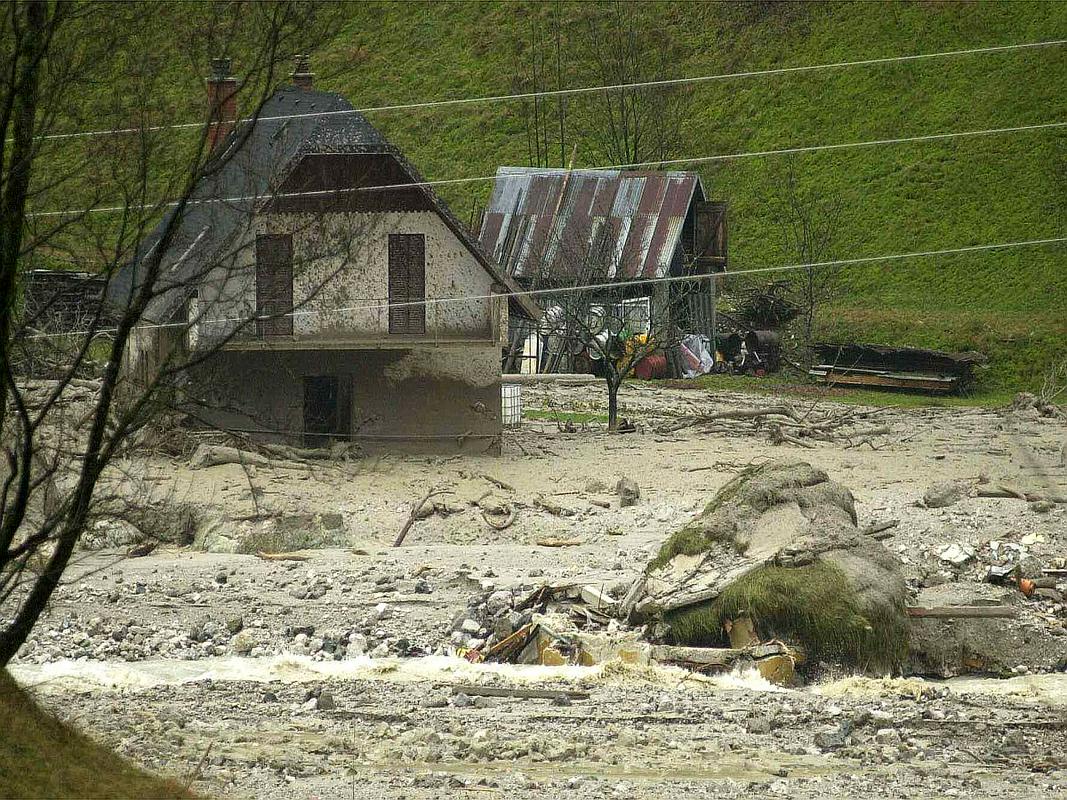
The small village of Log pod Mangartom in northwestern Slovenia is best known for its natural beauty, but in 2000, it was the brute power of nature that transformed the community into the setting of one of the worst natural disasters in Slovenian history.
The story began on November 15, 2000. That’s when heavy autumn rain triggered a landslide high above the village. It destroyed an important road that connected the area with Italy but caused no fatalities.
Less than two days later, in the early morning hours of November 17, 2000, the village of Log pod Mangartom was sound asleep as the rain continued to fall. What no-one realized is that water from a mountain stream was flowing into the debris from the landslide. Suddenly, the extra weight caused the debris to move and flow down the mountainside and towards the village below.
The debris flow reached the speed of 30 kilometers, carving a small valley as it approached the first buildings. It impacted 29 structures, destroying six of them.
Daylight revealed the true extent of the devastation. A part of the village – mostly outlying homes – was destroyed. Seven people had been killed.
Approximately 150 villagers were evacuated in the wake of disaster, but as conditions stabilized, they were allowed to return. Over the months and years that followed, two bridges were rebuilt, much of the infrastructure in the area was repaired, and several replacement homes were constructed on the other side of the village. Still, survivors of that November night 16 years ago will never forget the moment when Nature reminded everyone that it will always have the upper hand in the Alps.

































































